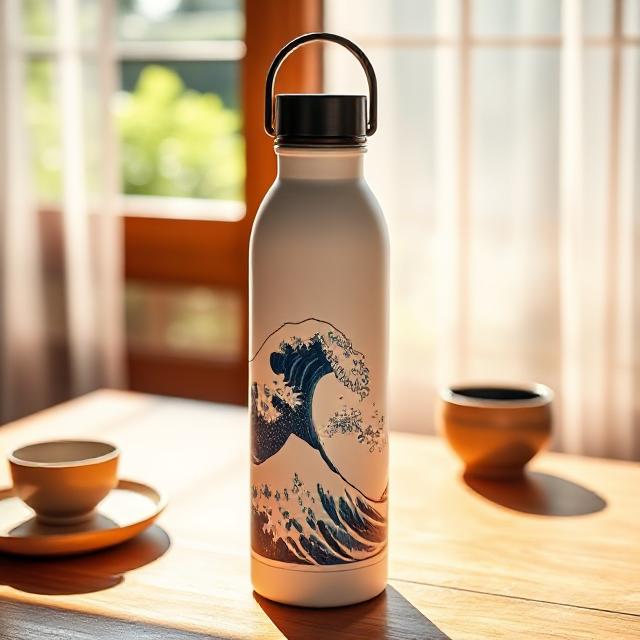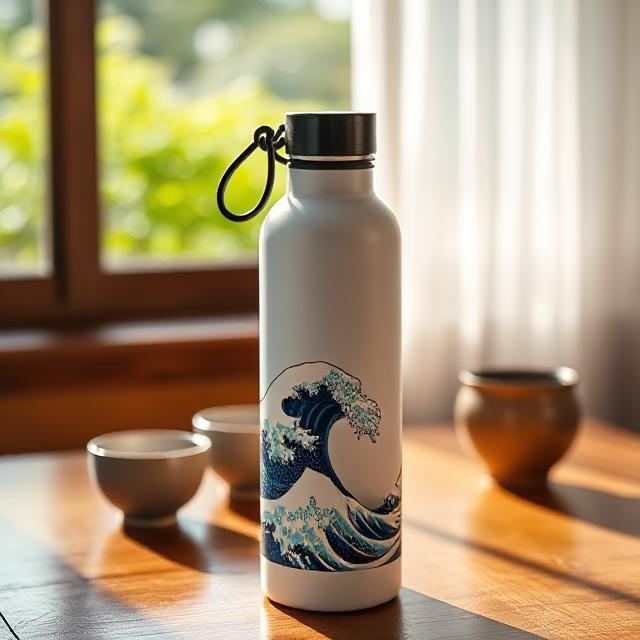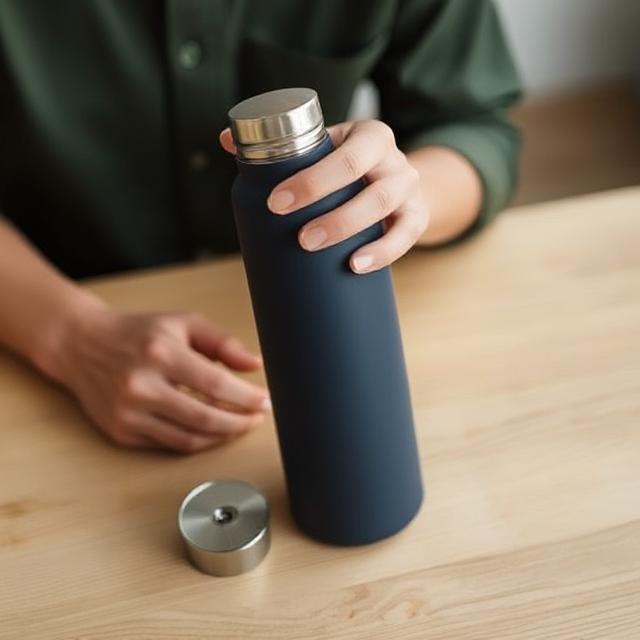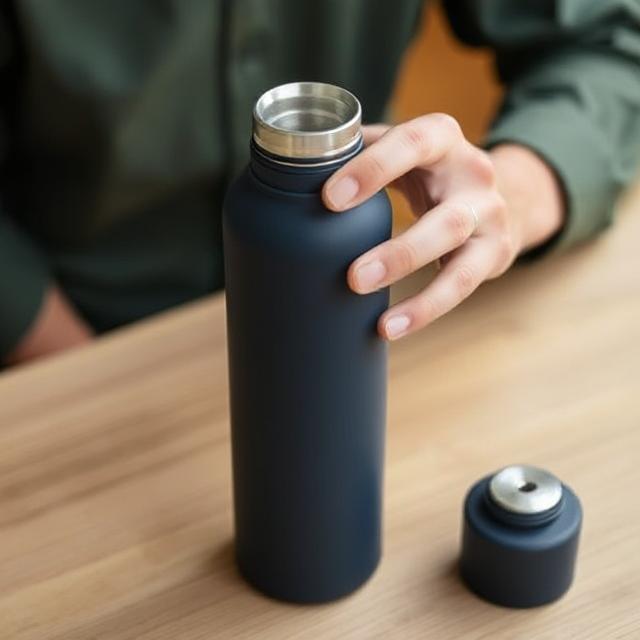There’s something undeniably special about a Japanese water bottle. Maybe it’s the sleek design that catches your eye or the way it feels perfectly balanced in your hand. Perhaps it’s the promise of keeping your drink ice-cold or piping hot for hours. Whatever it is, Japanese water bottles have earned a cult following worldwide, and I’m here to share why they’re more than just a trend—they’re a lifestyle upgrade. As someone who’s been obsessed with finding the perfect reusable bottle for years, I’ve fallen hard for the craftsmanship, innovation, and sheer practicality of these bottles.
In this guide, I’ll walk you through 10 reasons why a Japanese water bottle deserves a spot in your daily routine, with every detail explained to help you see why they’re worth the hype. Whether you’re a busy professional, a student, or an eco-conscious adventurer, these bottles blend style, function, and sustainability in a way that feels almost magical. So, grab a cozy drink, settle in, and let’s dive into why Japanese water bottles are stealing hearts (and sips) everywhere.

1. Unmatched Craftsmanship and Quality
When you hold a Japanese water bottle, you can feel the difference. The attention to detail is impeccable—smooth edges, flawless finishes, and a weight that feels substantial yet comfortable. Brands like Kinto, Zojirushi, and Tiger don’t just make bottles; they craft them with the same precision you’d expect from Japanese artisans. This isn’t mass-produced mediocrity; it’s a product born from a culture that values perfection.
Take Zojirushi’s stainless steel bottles, for example. Their vacuum insulation technology is the result of decades of refinement, ensuring your water stays cold or hot for hours. The materials are top-tier, often using 18/8 stainless steel that resists corrosion and doesn’t impart any metallic taste. Every seam is seamless, every cap screws on with satisfying precision. It’s the kind of quality that makes you trust the bottle will last for years, not just a season.
Why it matters: Investing in a Japanese water bottle means you’re getting a product built to endure daily use while looking as good as new. It’s a small but meaningful way to bring quality into your everyday life.
2. Superior Temperature Retention
If you’ve ever sipped lukewarm coffee from a cheap bottle or chugged water that lost its chill, you’ll appreciate the temperature retention of a Japanese water bottle. For hours, sometimes up to 24 hours for cold drinks and 12 hours for hot ones, these bottles are designed to maintain the ideal temperature for your beverages.
How do they do it? It’s all about double-walled vacuum insulation. Heat transmission is reduced by the vacuum created between the inner and outside walls. Zojirushi, for instance, claims their bottles can keep water below 39°F for 24 hours when filled with ice. I tested this myself on a sweltering summer hike, and even after six hours in the sun, my water was still refreshingly icy. Hot drinks fare just as well—my morning tea stayed steaming well into the afternoon.
Why it matters: Whether you’re commuting, working out, or traveling, a Japanese water bottle ensures your drink is exactly how you want it, no matter the conditions.
3. Sleek, Minimalist Design
Japanese design is synonymous with elegance, and Japanese water bottles are no exception. These bottles embrace minimalism with clean lines, soft colors, and a form that’s both functional and beautiful. Brands like Kinto offer matte finishes in earthy tones like sage green or blush pink, while Tiger’s bottles have a futuristic sheen that feels straight out of a sci-fi movie.
What I love most is how these designs feel personal. They’re not flashy or covered in loud logos; they’re understated, letting you express your style quietly. Plus, their compact shapes fit perfectly in car cup holders, gym bags, or even the side pocket of a backpack. It’s design that doesn’t scream for attention but earns it anyway.
Why it matters: A Japanese water bottle isn’t just a tool—it’s a statement piece that complements your aesthetic while being effortlessly practical.
4. Eco-Friendly and Sustainable

In a world drowning in single-use plastics, choosing a reusable Japanese water bottle is a small act of rebellion against waste. These bottles are built to last, reducing the need for disposable bottles that clog landfills and oceans. Many brands, like Kinto, prioritize sustainability by using recyclable materials and encouraging a culture of reuse.
I made the switch to a reusable bottle a few years ago, and it’s shocking how much plastic I’ve kept out of the trash. A single Japanese water bottle can replace hundreds of plastic bottles over its lifetime. Plus, the durability means you won’t need to replace it anytime soon, making it a win for both your wallet and the planet.
Why it matters: By choosing a Japanese water bottle, you’re making a conscious choice to live more sustainably without sacrificing style or convenience.
5. Leak-Proof and Worry-Free
There’s nothing worse than tossing a water bottle into your bag only to find your laptop swimming in a puddle later. With a Japanese water bottle, leaks are a non-issue. These bottles are designed with precision-engineered caps and gaskets that create a watertight seal. Whether it’s Zojirushi’s locking lid or Kinto’s screw-on cap, you can trust your bottle to stay sealed, even when it’s bouncing around in a backpack.
I’ve put my Tiger bottle through the wringer—tossed it in my gym bag, rolled it around in my car, even dropped it on a hike—and not a single drop has escaped. The peace of mind is invaluable, especially for those of us with busy, on-the-go lives.
Why it matters: A leak-proof Japanese water bottle lets you carry your drink with confidence, no matter where life takes you.
6. Lightweight and Portable
Despite their durability, Japanese water bottles are surprisingly lightweight. Brands like Kinto and Zojirushi have mastered the art of balancing sturdiness with portability. A typical 500ml bottle weighs less than a pound, making it easy to carry all day without feeling like you’re lugging around a dumbbell.
I remember switching from a bulky, heavy bottle to a Kinto Travel Tumbler, and it was a game-changer. I could slip it into my tote bag or hold it during a long walk without my arm aching. The slim profiles also make them ideal for small hands or cramped spaces, like a crowded desk or a bike’s bottle cage.
Why it matters: A lightweight Japanese water bottle makes staying hydrated effortless, no matter how packed your day is.
Buy – Zojirushi Water Bottle
7. Easy to Clean and Maintain

Nobody wants a water bottle that’s a chore to clean. Thankfully, Japanese water bottles are designed with simplicity in mind. Most feature wide mouths for easy access, removable gaskets for thorough cleaning, and dishwasher-safe components (though hand-washing is often recommended to preserve the finish).
Zojirushi’s bottles, for example, have a non-stick interior coating that resists odors and stains, so your water always tastes fresh. I’ve used mine for everything from herbal tea to fruit-infused water, and a quick rinse with warm soapy water keeps it spotless. Some brands even include cleaning brushes or offer replacement parts, ensuring your bottle stays in top shape for years.
Why it matters: A Japanese water bottle’s easy maintenance means you can focus on enjoying your drink, not scrubbing away stains.
8. Versatility for Every Lifestyle
Whether you’re a coffee addict, a fitness enthusiast, or a parent packing snacks for the kids, there’s a Japanese water bottle for you. These bottles come in a range of sizes (from 350ml to 1L) and styles, with features like straw lids for sipping on the go or thermal mugs for your morning brew.
I love how my Kinto bottle transitions seamlessly from my morning commute to an afternoon yoga class. For outdoor adventures, Tiger’s larger bottles with sturdy handles are perfect for camping or hiking. Some models even have interchangeable lids, so you can switch between a sipping spout and a wide mouth depending on your needs.
Why it matters: A Japanese water bottle adapts to your lifestyle, making it a versatile companion for any occasion.
9. Health-Conscious Materials
When it comes to what you drink from, materials matter. Japanese water bottles are made with high-quality, BPA-free stainless steel or food-grade silicone, ensuring your water stays pure and free of harmful chemicals. Unlike some plastic bottles that can leach toxins over time, these bottles are designed with your health in mind.
I’ve noticed a real difference in taste since switching to a stainless steel Japanese water bottle. My water tastes crisp and clean, with no plasticky aftertaste. Plus, the lack of chemical coatings means I don’t have to worry about what’s seeping into my drink during a hot day.
Why it matters: A Japanese water bottle gives you peace of mind that your hydration is safe and pure, every single time.
10. Cultural Connection and Aesthetic Joy

There’s something deeply satisfying about using a product that reflects a culture of mindfulness and beauty. Japanese water bottles embody the Japanese philosophy of wabi-sabi—finding perfection in simplicity. Every curve, color, and texture is intentional, designed to bring a little joy to your day.
When I use my Kinto bottle, it’s not just about staying hydrated; it’s a moment of calm in a hectic day. The soft matte finish, the satisfying click of the cap it’s a small ritual that grounds me. Owning a Japanese water bottle feels like carrying a piece of Japanese culture with you, a reminder to slow down and appreciate the little things.
Why it matters: A Japanese water bottle isn’t just functional; it’s a daily dose of beauty and mindfulness that elevates your routine.
Why You Should Make the Switch Today
By now, you’re probably as enchanted by Japanese water bottles as I am. They’re more than just a way to carry water—they’re a blend of art, engineering, and sustainability that makes every sip feel special. From their unmatched quality to their eco-friendly ethos, these bottles are designed to fit seamlessly into your life while making a positive impact on the planet.
If you’re ready to upgrade your hydration game, start exploring brands like Zojirushi, Kinto, or Tiger. Each offers something unique, whether it’s a compact tumbler for your commute or a rugged bottle for your next adventure. Trust me, once you experience the magic of a Japanese water bottle, you’ll wonder how you ever lived without one.
What’s your favorite feature of a Japanese water bottle? Are you team sleek design or all about that temperature retention? Please share your ideas in the comments section below. And if you found this guide helpful, share it with a friend who needs a hydration upgrade. Here’s to staying hydrated, stylish, and sustainable!
